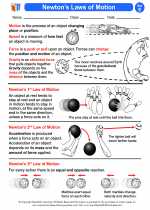Earth's Core
The Earth's core is the innermost part of our planet. It is divided into two layers: the outer core and the inner core.
Outer Core
The outer core is a liquid layer composed of molten iron and nickel. It is located beneath the Earth's mantle and surrounds the solid inner core. The outer core is responsible for generating the Earth's magnetic field through the movement of the liquid metal. This magnetic field protects the Earth from the solar wind and cosmic rays.
Inner Core
The inner core is a solid, dense ball of iron and nickel. It is believed to have formed as a result of the immense pressure at the center of the Earth. The temperature at the inner core is thought to be as high as 9,000 degrees Fahrenheit (5,000 degrees Celsius). Despite the extreme heat, the inner core remains solid due to the high pressure exerted on it by the surrounding layers of the Earth.
Importance of the Earth's Core
Studying the Earth's core is crucial for understanding the planet's geodynamo, which is the mechanism responsible for generating the Earth's magnetic field. This magnetic field is crucial for life on Earth, as it shields the planet from harmful solar radiation and helps to maintain a stable atmosphere.
Study Guide
- What are the two layers of the Earth's core?
- What is the outer core composed of?
- How does the outer core contribute to the Earth's magnetic field?
- What is the inner core made of?
- How does the high pressure at the Earth's core affect the state of the inner core?
- Why is studying the Earth's core important?
Understanding the Earth's core is fundamental to comprehending the dynamics of our planet and its magnetic field. It also plays a crucial role in geophysical studies and the development of models for the Earth's interior structure.
[Earth's Core] Related Worksheets and Study Guides:
.◂Science Worksheets and Study Guides Fifth Grade. Newton's Laws of motion

 Activity Lesson
Activity Lesson
 Worksheet/Answer key
Worksheet/Answer key
 Worksheet/Answer key
Worksheet/Answer key
 Worksheet/Answer key
Worksheet/Answer key
 Worksheet/Answer key
Worksheet/Answer key
 Vocabulary/Answer key
Vocabulary/Answer key
 Vocabulary/Answer key
Vocabulary/Answer key
